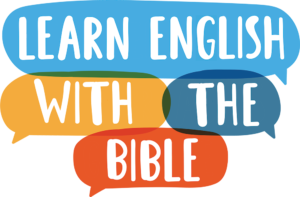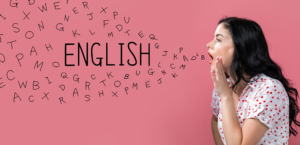Linking Words Together - Vowel to Vowel
“Please speak more slowly!”
That’s a very common sentence to hear from language learners! And I say it too, when I am listening to someone speak in Italian, a language I am trying to learn. But why does speaking slowly help? The pronunciation doesn’t change much, and the vocabulary is the same.
When you speak quickly, you link your words together. It isn’t natural to pause between words. But sometimes, as language learners, we have trouble hearing where one word stops and the next word starts. The end of one word will be “linked” in pronunciation to the beginning of the next word. It can sound like one big, long word. That’s why speaking slowly can help – we can more easily identify the words we are hearing.
In this post, we’ll begin looking at “linking,” and how it works. The subject of linking words together can get very complicated, but we’ll cover the basics so you can understand a little bit of how this works. We’ll start by learning how vowels link together.
Linking Vowel to Vowel
If the first word ends with a vowel, and the next word begins with a vowel, very often English speakers will insert a “y” or “w” sound to blend the two vowels together. This happens in two different ways.
Linking A, E, and I
When you say these letters, your mouth is wide. If the next word starts with a vowel, English speakers will insert a “y” sound between the vowels. “Y” is also a sound where your mouth is wide. Having a consonant sound between the vowels helps to pronounce them. Look at these examples:
way out – way + y + out
we are – we + y + are
my orange – my + y + orange
If you are thinking that the “y” sound already existed, you are right! When we use it to connect words, it’s just a little stronger. That’s why it’s natural to use this sound to connect words that end in a, e, and i. Here are some more examples:
He ate the apple.
He + y + ate the + y + apple.
Mindy arrived very early.
Mindy + y + arrived very + y + early.
They asked for the umbrella.
They + y + asked for the + y + umbrella.
Linking O and U
If the first word ends in o or u, your mouth is in a different shape. These sounds are made with your mouth more narrow. Look at the following examples. You will see that the “y” connecting sound doesn’t work. It only helps with a, e, and i, because those vowels are also pronounced with your mouth wide.
Instead, “w” is the connecting sound for o and u! It sounds more natural and is easier to pronounce.
who asked – who + w + asked
yellow apples – yellow + w + apples
knew you – knew + w + you
You can even see that these words sometimes end with w. Here are some sentences to practice with. Repeat after me.
Babies grow up too fast.
Babies grow + w + up too fast.
You eat too often.
You + w + eat out too + w + often.
Who asked to open the door?
Who + w + asked to + w + open the door?
Don’t Stress!
Don’t stress too much about this! After a little bit of practice, you will see that these extra sounds, “y” and “w,” are very natural. You won’t have to think much about it, because they will make your sentences more fluid and easier to pronounce.
Remember, the word doesn’t have to end with a vowel letter! It can end with a vowel SOUND, and the rule is the same.
high up – high + y + up
the gh is silent, so the word ends with a long i sound.
threw up – threw + w + up
the “ew” makes the “oo” sound, so it sounds like a vowel.
Long Vowel Sounds Only
One more thing – we are talking about long vowel sounds. If a word ends with a short vowel sound, we don’t use a “y” or “w” sound to connect them. It’s not very common for an English word to end with a short vowel, but it happens sometimes. Just leave a little pause between your words.
Carla exited the train.
Africa is a continent.
Remember, we’re always talking about how the word sounds, not how it’s spelled!
Please leave a comment below and tell me if this lesson helped you! Do you have any questions? Let me know! Come back next week for part two, where we’ll talk about linking two consonants. Have a good week!


